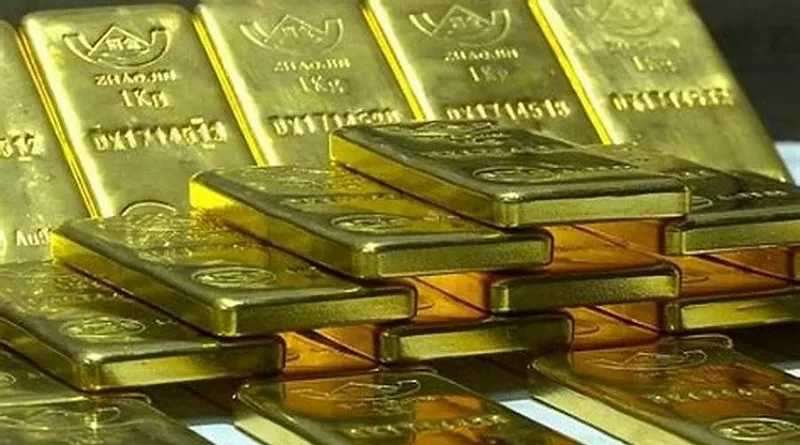Gold has long been regarded as a reliable store of value and a hedge against inflation, making it a popular choice for investors seeking stability in uncertain times. However, within the realm of gold trading, there are two primary methods through which investors can participate: spot gold and gold futures. While both involve trading in the precious metal, they operate under distinct mechanisms and serve different purposes in the financial markets. Understanding the differences between spot gold and gold futures is crucial for investors looking to navigate these markets effectively.
Spot Gold
Spot gold refers to the purchase or sale of gold at its current market price, with settlement (delivery of the physical gold or cash equivalent) typically occurring within a short timeframe, often within two business days. Here’s a breakdown of the key characteristics of spot gold trading:
Immediate Transaction: In spot gold trading, transactions are executed “on the spot,” meaning the buyer and seller agree on a price and settle the trade shortly thereafter. This immediacy allows investors to quickly take advantage of current market conditions.
Physical Delivery or Cash Settlement: While the intention in spot trading is often to settle in physical gold, it is also common for settlements to occur in cash, where the equivalent value of the gold at the agreed-upon price is exchanged.
Market Liquidity: The spot gold market is highly liquid, with a large number of buyers and sellers actively participating. This liquidity ensures that investors can enter and exit positions easily without significantly impacting prices.
Price Determination: The price of spot gold is influenced by real-time market forces, including supply and demand dynamics, geopolitical events, economic indicators, and investor sentiment. It reflects the current market consensus on the value of gold.
Minimal Counterparty Risk: Since spot transactions typically involve immediate settlement, the counterparty risk (the risk that one party will fail to fulfill its obligations) is relatively low compared to other financial instruments.
Gold Futures
In contrast to spot gold, gold futures are standardized contracts traded on futures exchanges, where investors agree to buy or sell a specified quantity of gold at a predetermined price on a future date. Let’s delve into the distinctive features of gold futures trading:
Contractual Agreement: Gold futures involve a contractual agreement between a buyer and a seller to exchange gold at a future date, known as the delivery date, at a price agreed upon today (the futures price).
Fixed Terms: Futures contracts have standardized terms, including the quantity of gold (typically 100 troy ounces per contract), the quality of gold (meeting certain purity standards), and the delivery date (which can range from one month to several years in the future).
Price Discovery: Futures prices are determined through open market trading on futures exchanges, where supply and demand dynamics, as well as market expectations about future gold prices, play a crucial role. This process of price discovery helps in hedging and speculation strategies.
Margin Requirements: Futures trading involves margin requirements, where traders are required to deposit a fraction of the contract value (initial margin) to initiate a position. Margin calls may be issued if the market moves unfavorably, requiring additional funds to maintain the position (maintenance margin).
Risk Management Tool: One of the primary purposes of gold futures is risk management. Hedgers, such as gold producers and jewelry manufacturers, use futures contracts to mitigate the risk of adverse price movements. Speculators, on the other hand, aim to profit from price fluctuations.
Key Differences and Considerations
Now that we’ve explored the fundamentals of spot gold and gold futures, let’s highlight the key differences and considerations for investors:
Time Horizon: Spot gold is suitable for investors looking for immediate exposure to the current price of gold, whereas gold futures cater to those interested in future price movements and want to hedge or speculate over a longer period.
Risk Profile: Spot gold carries minimal counterparty risk due to its immediate settlement, whereas gold futures involve counterparty risk until the contract expires or is closed out. Additionally, futures trading involves leverage and margin requirements, amplifying both potential profits and losses.
Market Influence: Spot gold prices are influenced by current market conditions and sentiment, while gold futures prices reflect expectations about future market conditions, economic indicators, and geopolitical events.
Regulation and Exchange Requirements: Both spot and futures markets are subject to regulatory oversight, but futures trading on exchanges involves adhering to specific exchange rules and procedures.
Purpose and Strategy: Investors typically use spot gold for direct investment purposes or as part of a diversified portfolio. Gold futures are more commonly used for hedging against price volatility or for speculative trading strategies.
See Also What Does Spot Mean When Buying Gold?
Conclusion
In conclusion, both spot gold and gold futures offer unique opportunities and risks for investors seeking exposure to the precious metal. Spot gold provides immediate ownership at current market prices, appealing to those interested in physical ownership or short-term trading. Gold futures, on the other hand, offer standardized contracts for future delivery, serving as vital tools for hedging and speculating on price movements over time.
Understanding these differences is essential for investors to make informed decisions based on their investment objectives, risk tolerance, and market outlook. Whether you prefer the immediacy and simplicity of spot gold or the structured approach and risk management benefits of gold futures, both avenues play integral roles in the global gold market ecosystem, catering to diverse investor needs and strategies.


